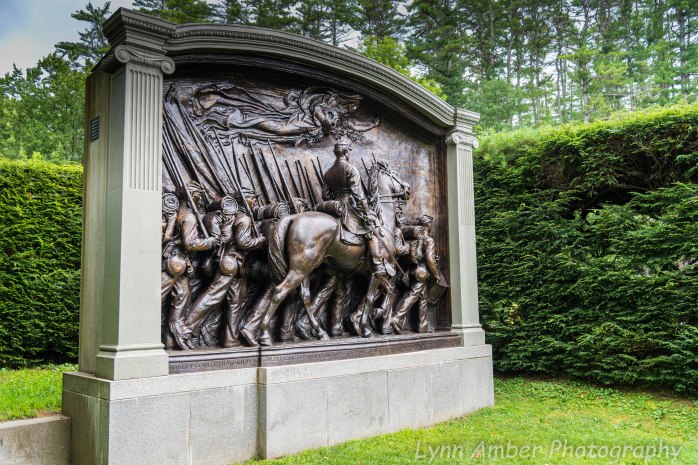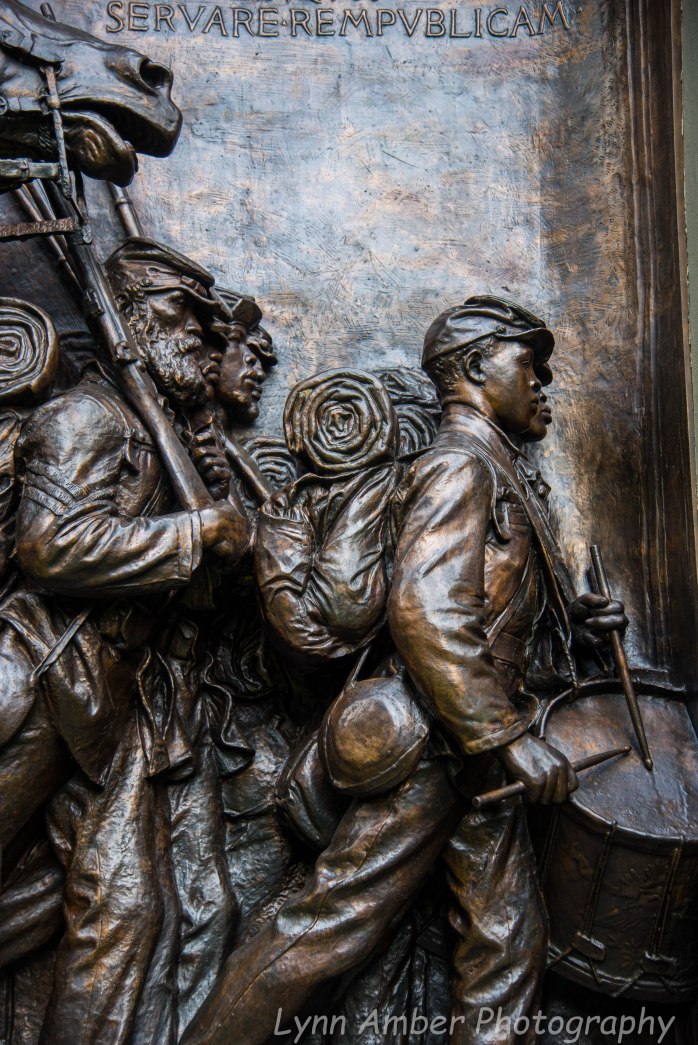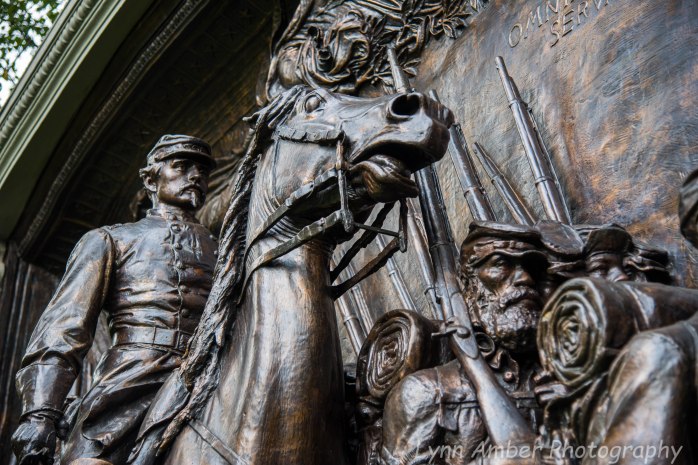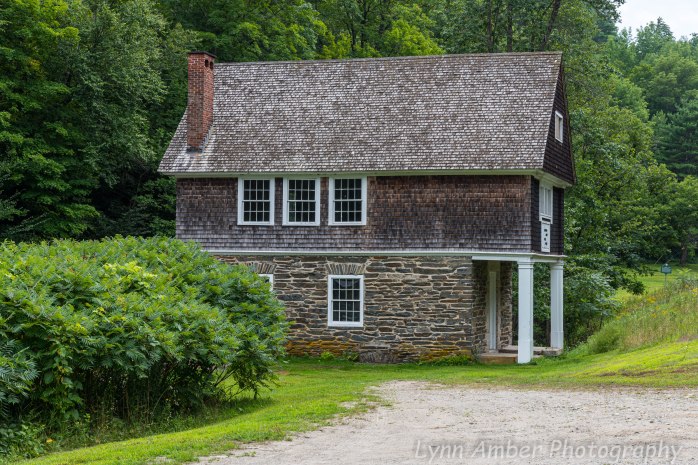Lynn Amber - Travel & Photography
sharing my thoughts through words and images
Vermont Summer Series 8.16.20 Saint-Gaudens National Historical Park

On Sunday August 16th, I embarked on a road trip with a friend to visit Saint-Gaudens National Historical Park. We traveled across the Connecticut River to our neighboring state of New Hampshire and the town of Cornish. The only national park in New Hampshire, Saint-Gaudens NHP preserves and promotes the legacy of the renowned American sculptor Augustus Saint-Gaudens.

Augustus Saint-Gaudens is perhaps best known for his numerous Civil War commemorative monuments honoring that era’s heroes. He was also adept at creating relief portraits and cameos and was commissioned by President Theodore Roosevelt to design a 10 and 20-dollar gold coin for the US Mint. These coins were minted until 1933.



Saint-Gauden’s decision to take up residence in Cornish, NH initiated a snowball effect that convinced other artists to migrate to the area. The Cornish Art Colony formed around 1885 and included sculptors, writers, painters, actresses and actors, poets, musicians, landscape architects and interior decorators. Along with sister art communities in New York, Massachusetts and Connecticut, the colony served to provide a peaceful, quiet and beautiful place to work as well as intellectual stimulation for the many artists who settled here.
The national historic park showcases Saint-Gaudens home “Aspet”, the landscaped grounds and woodland trails, his studio and examples of his artwork. In 2010, ownership of the adjacent property, Blow Me Down Farm, was transferred to the National Park Service. Plans are underway to develop this farm further as a “National Park for the Arts” in partnership with Opera North, a local non-profit performing arts organization.
While the buildings remain closed due to the Covid-19 pandemic, the grounds and trails are open from dawn until dusk. Strolling the park at a leisurely pace, examining the outdoor sculptures and walking the Ravine Trail proved a great way to spend a lazy Sunday in summer!


One of the most impressive sculptures on the property is the Shaw Memorial. It honors the service of the Union Army Colonel Robert Gould Shaw and the first African-American regiment (the 54th Massachusetts) he commanded during the Civil War. A cast of the original sculpture in Boston, the sculpture depicts the regiment on their march through Boston as they depart for the war. During the war, Shaw and the 54th Massachusetts regiment fought in the battle of Fort Wagner near Charleston, South Carolina. Shaw lost his life during this engagement as did many soldiers in his regiment. Their inspiring story is said to have led to more African Americans enlisting to fight for the Union and, as a result, was considered an important turning point of the war against the Confederacy.
We spent some time examining the frieze-like sculpture up close and personal. The detail is astonishing! 🙂




Another interesting sculpture is the recast of the funerary memorial to Marian “Clover” Hooper Adams, wife of historian Henry Adams, that is located in the Rock Creek Cemetery in Washington D.C. The interpretive sign on site indicated that both male and female models were used to render the figure.

Abraham Lincoln: The Man is a 12-foot tall statue of our 16th President. The original bronze sculpture resides in Lincoln Park along the shore of Lake Michigan in Chicago. It was dedicated in 1887. It was while working on this commission that Augustus Saint-Gaudens was enticed to visit Cornish, New Hampshire. He subsequently purchased a summer home and studio. An interesting side note, he discovered one of his models for the Lincoln sculpture in nearby Windsor, Vermont. A 6-foot tall farmer named Langdon Morse. I was especially impressed by the engraving in the back of the Chair of State.

After strolling around the manicured grounds, we followed a short trail that descends into a ravine and follows the Blow Me Down Creek. The trail led to a dammed up “swimming hole” used by the Saint-Gauden family. Ascending the trail at the other end, we walked out of the woods into a clearing that is home to the Temple monument. It was originally built as a back-drop for a play presented by the original Cornish Art Colony community. It now serves as the burial place for the Saint-Gaudens family.

On our way back to the truck, we veered through the cutting garden near the house, which included a good variety of flowers blooming. I thought the garden looked a tad tired, though, and in need of some maintenance. In fact, most of the interpretive signs throughout the grounds are long past due for replacement and upgrading. In my extensive travels through many of our national parks, I have noticed this kind of deterioration throughout our parks. It saddens me deeply. Our national parks and historic sites are our heritage and, as such, should be valued and adequately funded. There exists a serious backlog of maintenance projects in all parks and it’s about time we prioritized the development and on-going support for these beautiful lands instead of trying to push through funds for something as utterly ridiculous and useless as a “border wall.” That’s all I’m going to say about that!




After touring the grounds, we departed Saint-Gaudens NHP in search of a good place to enjoy a picnic lunch. We had noticed an historic grist mill near the entrance to Saint-Gaudens and found a spot to pull over and eat. The mill is actually part of the original Blow Me Down Farm that is now part of the national park.
We ate lunch on the stone wall that once bordered old Route 12A and was part of the bridge that spanned the creek. Underneath the spot where we dined, the creek flows through the tunnel. Route 12A was eventually re-routed to straighten the road and the old road is now a grassy area where you can park and enjoy the scenery and walk the Blow Me Down Trail that leads back up to Saint-Gaudens.




All in all, a wonderful day spent exploring this national historic park. Thanks to my traveling buddy, Beth Ann, for accompanying me!!
Post both interesting and well illustrated. I enjoy the lush nature of New England and its elegant houses, it reminds me of the Berkshires around Stockbridge.
LikeLike
It is one of our favorite parks. We apply to volunteer there but were not selected. Lovely revisiting of our memories.
Kurt & Sandi
LikeLike
I think you would really enjoy volunteering here. There’s so much rich history in the area. I thoroughly enjoyed my visit. Jim mentioned that he would like to go and see the grounds as well after I showed him my photos. Especially, he wants to see that amazing honey locust tree!
LikeLike
Oh, I agree! New England tends to be so green and lush! New England and the east coast in general has such rich history and old, established architecturally significant buildings. The Berkshires is an area I’ve driven through but not really explored. Very reminiscent of New Hampshire and Vermont.
LikeLike
You are welcome. It was an enjoyable outing. You have a wonderful eye for photography. Impressive. Cheers.
LikeLiked by 1 person
We just got back from Marsh Billings Rockefeller…similar experience: nice stroll of grounds and hike to the Pogue, but no buildings open.
LikeLike
That’s great! You were very close to where I live! Visited Marsh Billings Rockefeller park several weeks ago and hiked to the lake as well. Beautiful area 🙂
LikeLike
As usual, stunning photography throughout. The Shaw and Adams memorials are our favorites. The serious facial expressions on the black soldiers speak volumes.
Stewart
LikeLiked by 1 person
Definitely enjoyed visiting! Thanks for the photography encouragement 🙂
LikeLike